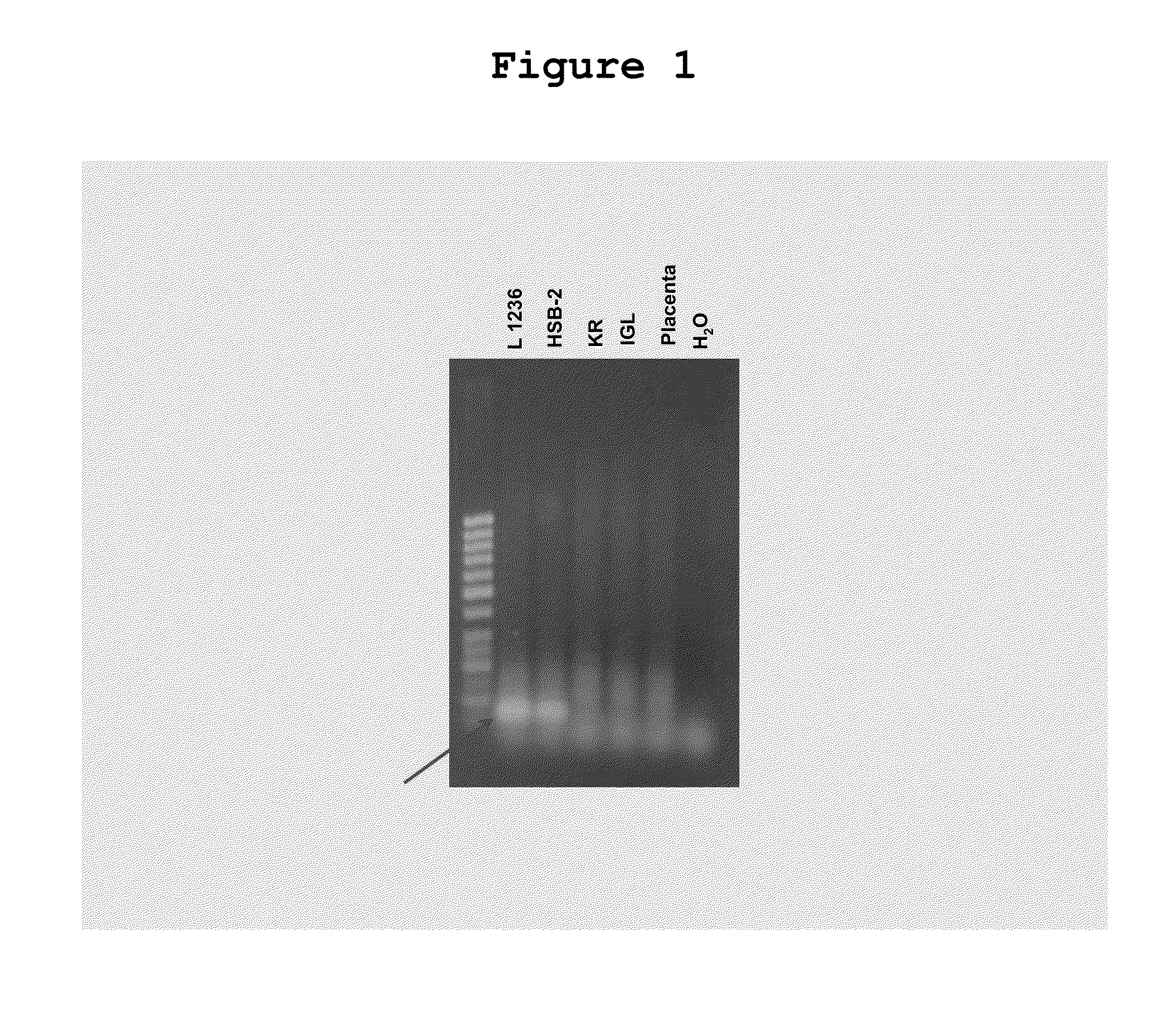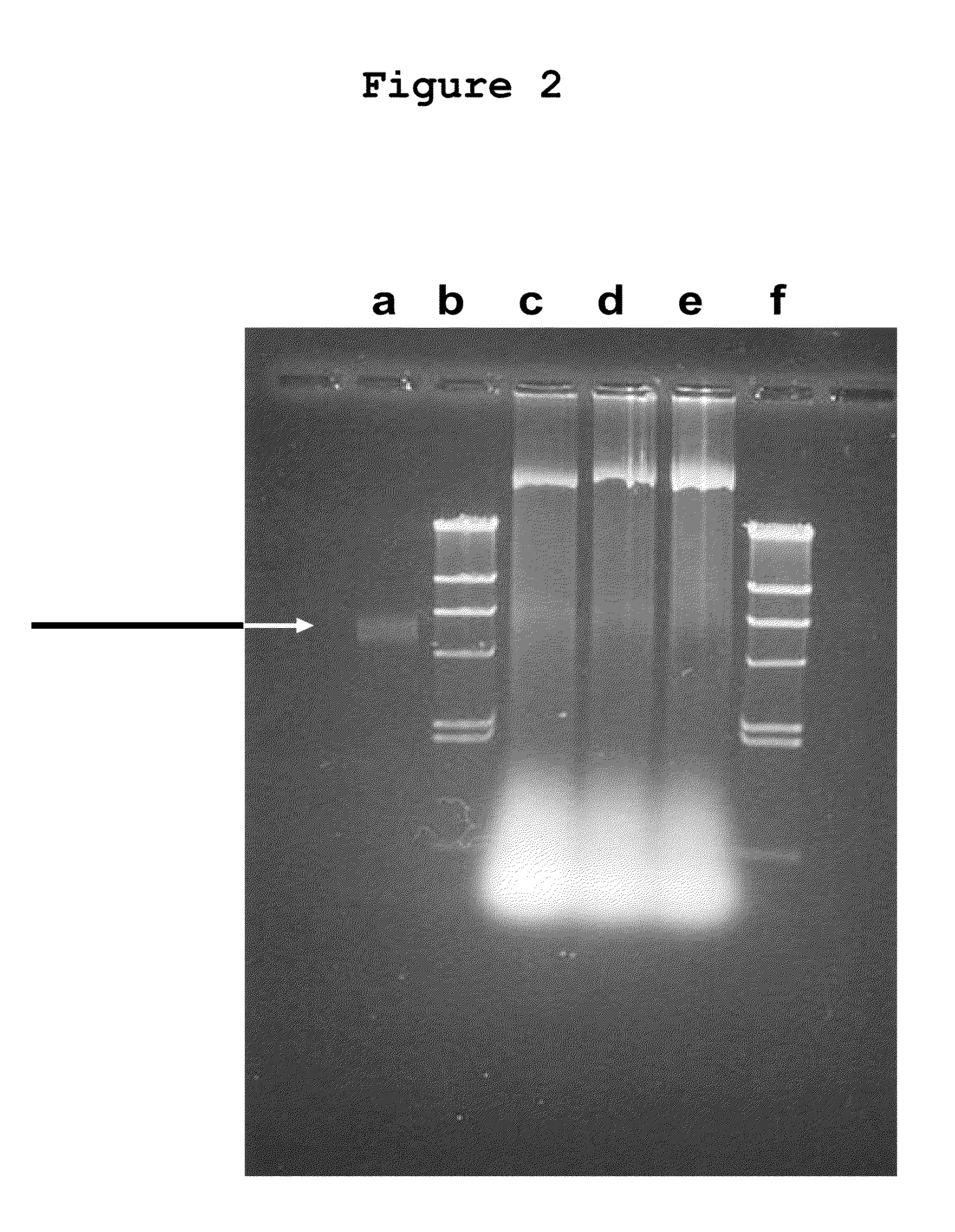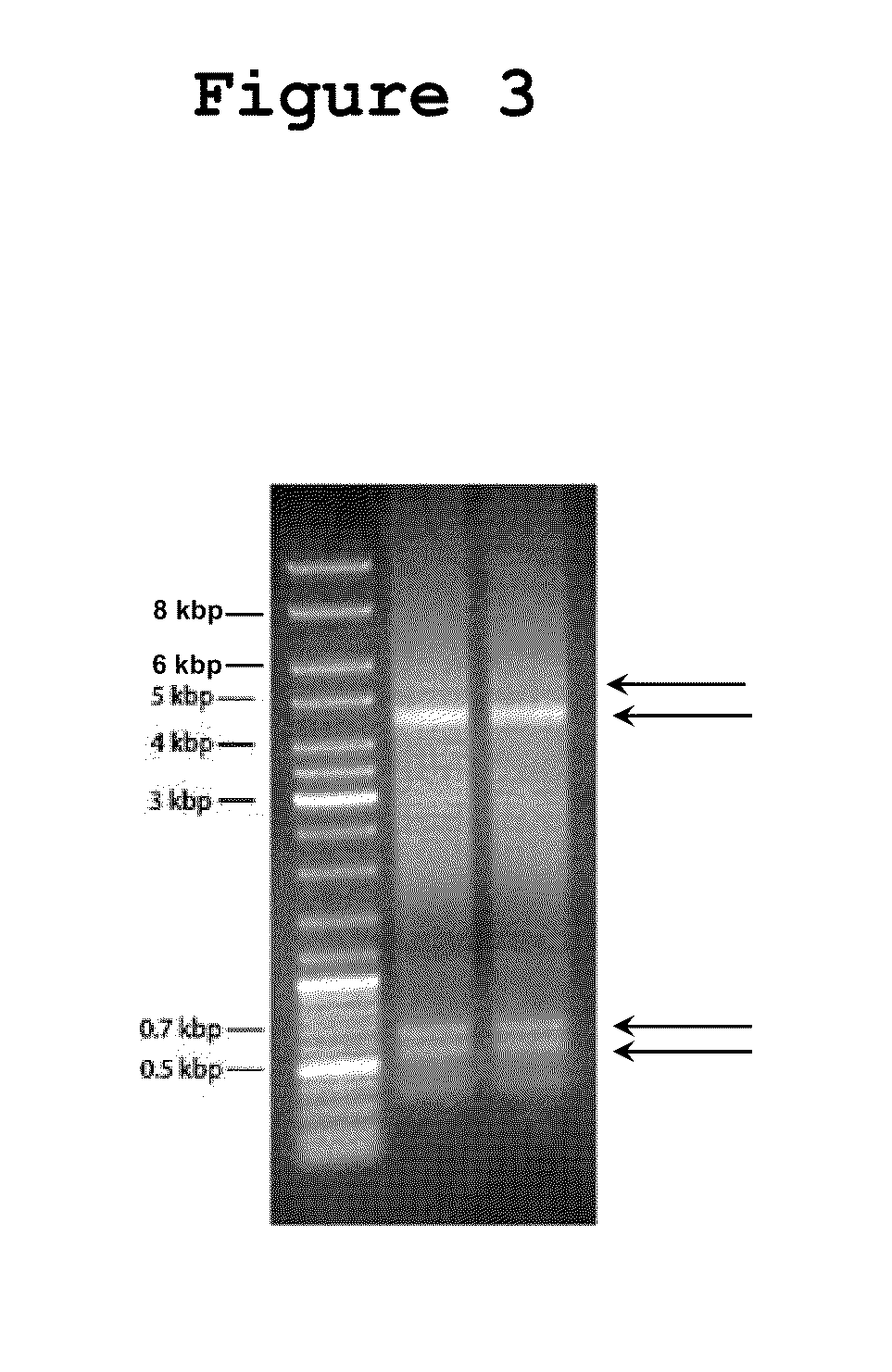Specific TT virus sequences and chimeric TT virus host cell DNA molecules for use in diagnosis, prevention and treatment of cancer and autoimmunity
a technology of chimeric tt virus and host cell dna, which is applied in the direction of viruses, dna/rna fragmentation, peptides, etc., can solve the problems of inability to demonstrate the pathogenic role of such infections in human diseases, inability to interpret results, and inability to fully replicate subviral dna genomes. , to achieve the effect of reducing the risk of developmen
- Summary
- Abstract
- Description
- Claims
- Application Information
AI Technical Summary
Benefits of technology
Problems solved by technology
Method used
Image
Examples
example 1
Demonstration of the Persistence of TTV DNA in Cells from Tissue Culture Lines Derived from Malignant Tumors
[0189]Cell lines derived from malignant tumors possess one advantage over primary tumor biopsy material. They commonly represent pure preparations of cancer cells, whereas primary materials are commonly contaminated by normal mesenchymal cells, by cells of the hematopoietic system and normal epithelial cells. On the other hand, one disadvantage of tissue culture lines may arise from the selection of specific clones growing under tissue culture conditions and the acquisition of secondary genetic modifications in the course of long-term cultivation. In addition, fetal calf sera may pose a risk due to the introduction of cattle viruses which survive serum inactivation procedures (e.g. bovine polyomavirus); see Table 1 summarizing these advantages / disadvantages.
TABLE 1Analysis of primary tumor biopsies vs establishedcell lines for TTV-related sequencesBiopsiesCell linesAdvantageDi...
example 2
Analyses of Chimeric TTV / Truncated Host Cell DNA Sequences
[0200]Initially, all attempts failed to use primers in outwards orientation starting within the regulatory region in order to find flanking TT viral DNA, surrounding this region. Invariably, however, human cellular DNA was demonstrated in the respective clones (FIG. 3).
[0201]The human genes in these clones and their arrangements within the single-stranded episomal DNA, obviously controlled by the TTV 71 base region, are presently being analyzed. The available data indicate a substantial variation in the uptake of commonly truncated host cell genes. Their possible conversion into growth-stimulating oncogenes or into functions interfering with tumorsuppressor genes requires functional tests which are presently under investigation. The same accounts for rearranged TTV virus sequences. Some of the available data are presented in FIGS. 7, 8, 9, and 11 to 13.
PUM
| Property | Measurement | Unit |
|---|---|---|
| length | aaaaa | aaaaa |
| polynucleic acid | aaaaa | aaaaa |
| pharmaceutical composition | aaaaa | aaaaa |
Abstract
Description
Claims
Application Information
 Login to View More
Login to View More - R&D
- Intellectual Property
- Life Sciences
- Materials
- Tech Scout
- Unparalleled Data Quality
- Higher Quality Content
- 60% Fewer Hallucinations
Browse by: Latest US Patents, China's latest patents, Technical Efficacy Thesaurus, Application Domain, Technology Topic, Popular Technical Reports.
© 2025 PatSnap. All rights reserved.Legal|Privacy policy|Modern Slavery Act Transparency Statement|Sitemap|About US| Contact US: help@patsnap.com



